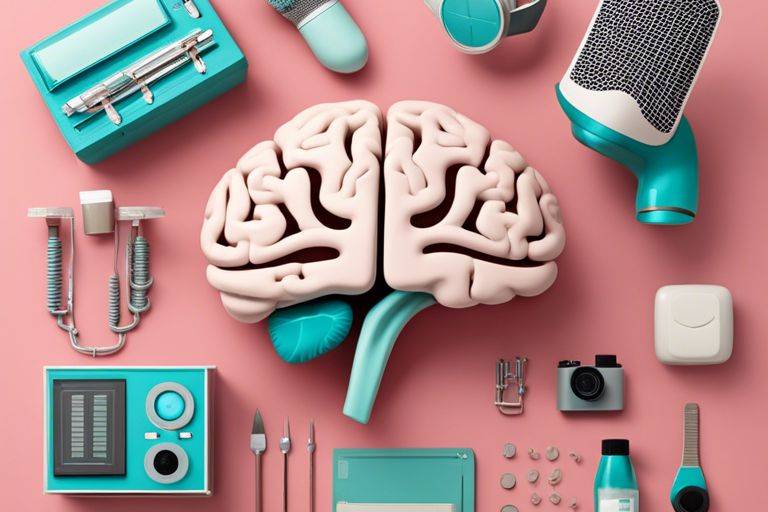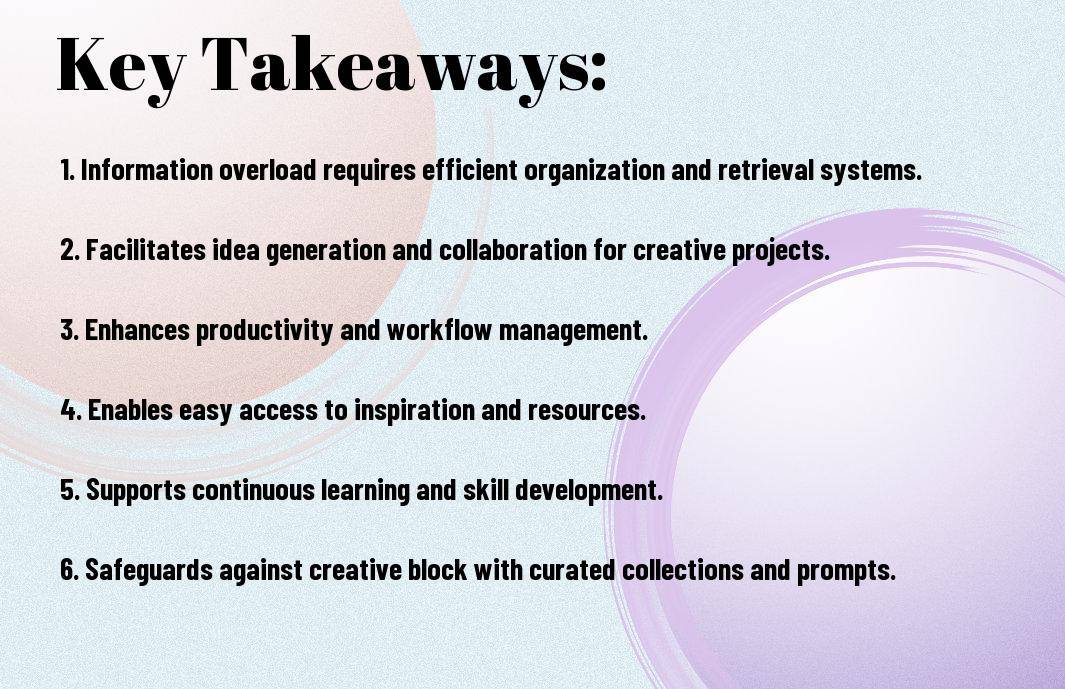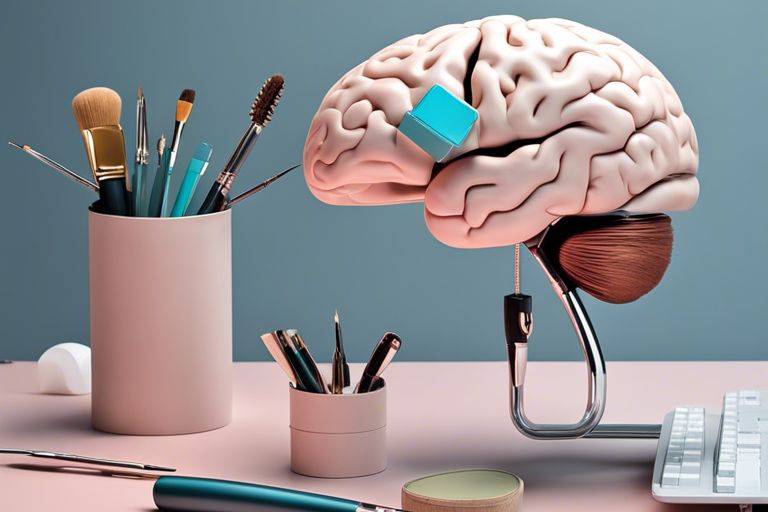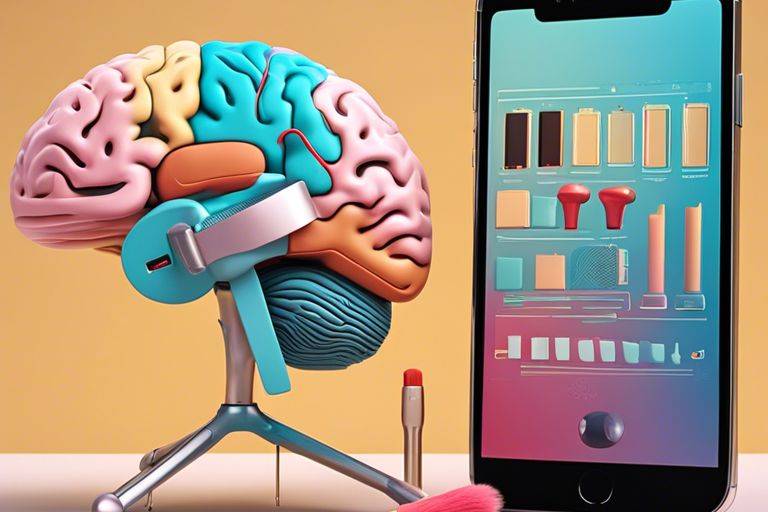
Newsletter Subscribe
Enter your email address below and subscribe to our newsletter

Enter your email address below and subscribe to our newsletter

Overwhelmed by information overload and constant demands on your creativity? In today’s fast-paced digital age, creative professionals face more challenges than ever before. From the pressure to stay innovative to the need to juggle multiple projects simultaneously, the demand for creative output is at an all-time high.
Having a second brain can be the key to managing this whirlwind of information and ideas effectively. By utilizing tools and techniques to capture, organize, and access your thoughts, you can boost productivity, enhance creativity, and ensure that no idea is lost in the shuffle.

It’s no secret that creative professionals are often expected to juggle multiple projects simultaneously while staying connected at all hours of the day. Any slight break in workflow can lead to missed opportunities or falling behind in the competitive creative industry. The pressure to constantly multitask and be always reachable can take a toll on one’s mental clarity and focus.
For creative professionals, the digital age has brought with it a deluge of information from all corners of the internet. From social media feeds to industry news updates, the sheer volume of data can quickly lead to information overload and eventually creative burnout. A constant barrage of information can make it challenging for creatives to stay inspired and come up with fresh ideas.
Adopting a second brain system can help creative professionals manage their workflow more efficiently. By organizing and storing valuable insights, ideas, and inspiration in a structured way, they can easily access and reference them when needed. This can help combat information overload and prevent creative burnout by providing a reliable resource to fuel creativity.

Keep How Building a Second Brain Changed My Life in mind as we examine into the Second Brain concept. This innovative approach to organizing information and enhancing productivity has gained recognition among creative professionals for its ability to streamline workflows and boost creativity.
Any creative professional can benefit from the concept of a Second Brain, originally popularized by productivity expert Tiago Forte. The idea stems from the limitations of our biological brains in processing, storing, and retrieving vast amounts of information effectively. By offloading some cognitive tasks to a digital tool, professionals can free up mental space for higher-order thinking and creativity.
For those new to the concept, a Second Brain typically consists of a combination of note-taking apps, cloud storage systems, and knowledge management tools. These tools collectively serve as an external extension of your memory and cognition, allowing you to capture insights, ideas, and resources for easy access whenever needed. This organized approach can significantly improve your workflow efficiency, creativity, and overall peace of mind.
To fully leverage the power of a Second Brain, professionals are encouraged to adopt a structured approach to capturing and organizing information. By implementing consistent frameworks and methodologies for information management, individuals can maximize the potential of their Second Brain and unlock new levels of productivity and innovation.
Creative professionals juggle multiple projects and ideas daily. With a second brain system, they can organize their thoughts, inspiration, and references in a structured manner. This leads to enhanced organization and easy retrieval of ideas when needed. By having a central repository for their creative inputs, professionals can avoid the frustration of hunting down scattered notes and files, allowing them to focus more on their craft.
An external brain acts as a creative hub for professionals to store their ideas, research, and resources. By offloading information from their primary memory to a second brain, creatives can free up mental space and incubate new ideas more effectively. This external storage not only prevents creative burnout but also enables professionals to explore connections between different projects and concepts, fostering innovative thinking and fresh perspectives.
Understanding how a second brain fosters creativity through external storage is crucial for creative professionals looking to elevate their work to the next level. By externalizing their thoughts and ideas, professionals can create a digital archive that serves as a source of inspiration and a springboard for new projects. This external brain not only helps in organizing information but also in facilitating creative connections that might not have been apparent before.

After recognizing the importance of having a second brain as a creative professional, the next step is to explore the tools and technologies that can help you effectively build and organize it. Embracing digital note-taking and mind-mapping applications can be a game-changer in this process.
Building your second brain starts with choosing the right digital tools to capture and connect your ideas, inspirations, and insights. Digital note-taking apps like Evernote, Notion, or OneNote offer versatile platforms to store text, images, links, and even audio recordings in an organized manner. Mind-mapping tools such as MindMeister or XMind facilitate visual thinking and help you map out relationships between different concepts, fostering creativity and enhancing your understanding of complex topics.
Building your second brain also involves leveraging cloud storage and data management solutions to ensure seamless access to your information across devices and locations. Cloud-based platforms like Google Drive, Dropbox, or iCloud offer secure and scalable storage options for your digital assets, allowing you to sync and backup your data effortlessly. By storing your notes, documents, and media files in the cloud, you can prevent data loss, collaborate with others in real-time, and access your second brain anytime, anywhere.
It’s crucial to prioritize data privacy and security when choosing a cloud storage solution for your second brain. Look for platforms that provide encryption, multi-factor authentication, and regular backups to safeguard your valuable information. Additionally, consider the scalability and integration capabilities of the cloud storage service to ensure it can accommodate your growing collection of digital content and seamlessly connect with other productivity tools in your workflow.
Once again, if you’re a creative professional looking to enhance your productivity and creativity, incorporating a second brain into your daily workflows is crucial. For content creators, this can be a game-changer. If you want to learn more about how to build a second brain specifically as a content creator, check out How to Build a Second Brain as a Content Creator.
An crucial aspect of integrating a second brain into your daily routines is creating habits that support its use. Start by setting aside a dedicated time each day to review and organize your second brain. This consistency will help solidify the habit and make it a natural part of your workflow. Additionally, adjusting your routine to include regular check-ins and updates to your second brain will ensure that it stays relevant and up-to-date.
An important aspect of maximizing the benefits of your second brain is collaborating and sharing information with it. By incorporating input from team members or peers, you can enhance the collective knowledge within your second brain. This sharing can lead to innovative ideas and cross-pollination of thoughts, sparking new avenues for creativity and problem-solving.
Into the second brain, you can also integrate tools for collaborative work such as shared folders or project management systems. This allows for seamless communication and cooperation within your team, fostering a collaborative environment where everyone can contribute to and benefit from the shared pool of information.
For many creative professionals, incorporating a second brain into their workflow can be met with resistance. It’s normal to feel reluctant to adopt new habits or tools, especially when it requires changing established routines. However, recognizing the benefits that a second brain can bring, such as increased productivity, better organization, and enhanced creativity, can help overcome this initial resistance.
One helpful approach is to start small and gradually integrate your second brain into your daily routine. Set aside dedicated time each day to update your digital notes, capture new ideas, and review existing information. By consistently engaging with your second brain, you will begin to see the value it adds to your work process, ultimately making it easier to embrace as a new habit.
Resistance to adopting a second brain can also stem from concerns about privacy and security. It’s crucial to address these valid worries by choosing a trusted platform for storing your digital notes and information. Look for reputable services that prioritize data encryption, offer secure access controls, and have a track record of safeguarding user data.
Dealing with sensitive information in your second brain, such as client details or innovative project concepts, requires diligent protection measures. Implementing password protection, enabling two-factor authentication, and regularly backing up your data are crucial steps in ensuring the privacy and security of your second brain.
Drawing together all the reasons explored, it’s clear to see why creative professionals would greatly benefit from having a second brain now more than ever. With the increasing complexity of projects, the vast amount of information to sift through, and the need for innovative ideas, having a second brain can serve as a valuable asset to enhance creativity, productivity, and overall workflow. By being able to offload, organize, and cultivate ideas effectively, creative professionals can navigate the digital age with ease and stay ahead in their field.
In today’s fast-paced and competitive world, where creativity is highly valued, having a second brain can provide a structured approach to managing ideas, inspiration, and resources. It not only helps creative professionals stay organized and focused but also allows for better collaboration, problem-solving, and learning. So, if you’re a creative professional looking to level up your game, now is the time to invest in building your second brain.
A: Creative professionals deal with a lot of information, ideas, and inspiration daily. Having a second brain helps them organize, store, and access all this valuable content efficiently.
A: A second brain is a digital or analog system that helps individuals collect, organize, and retrieve important information, ideas, and resources to enhance their creativity and productivity.
A: A second brain can help creative professionals manage their projects, ideas, inspiration, and resources more effectively, leading to increased creativity, productivity, and organization.
A: Popular tools for creating a second brain include digital apps like Evernote, Notion, and Roam Research, as well as analog systems like bullet journals and mind maps.
A: A second brain provides a centralized location to store and categorize all types of information, ensuring that creative professionals can easily access what they need when they need it.
A: Yes, a second brain can serve as a repository for ideas, sketches, inspiration, and references, making it easier for creative professionals to brainstorm, develop, and expand upon their ideas.
A: To start building a second brain, creative professionals can begin by choosing a system that works best for them, setting up categories or collections, and gradually adding and organizing their information and ideas.
Unmatched Productivity – Ultimate Guide to Harnessing Your Second Brain
SMART Goals – George T. Doran’s Method for Setting Clear and Achievable Goals
The Science of Concentration in The Art of Focus
Why Creative Professionals Need a Second Brain Now More Than Ever